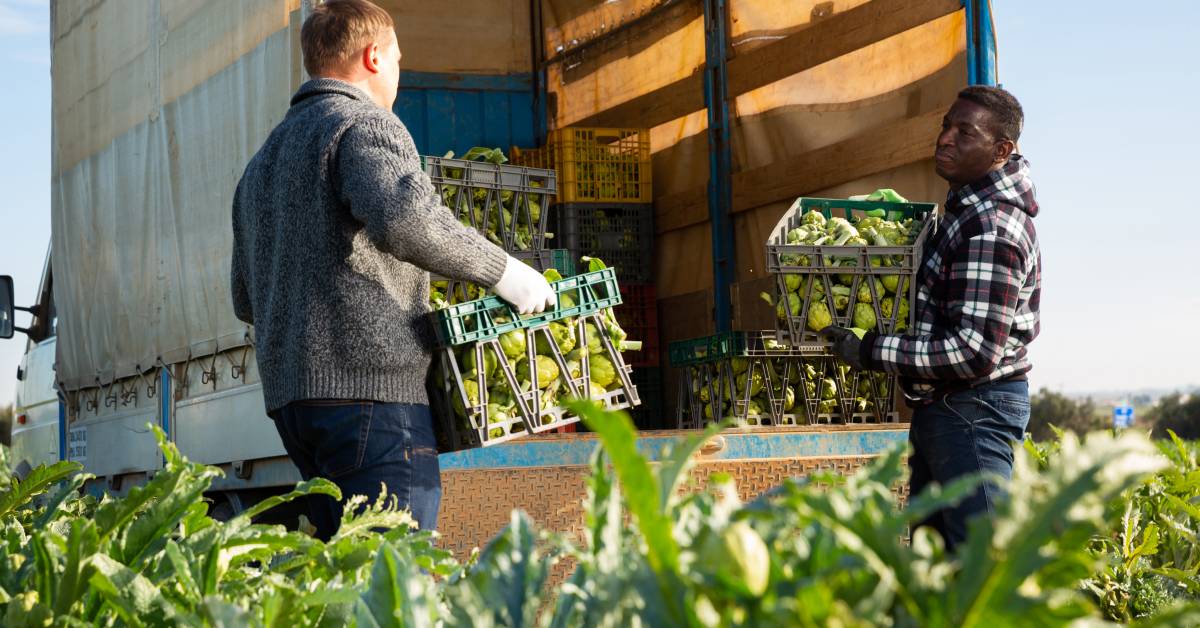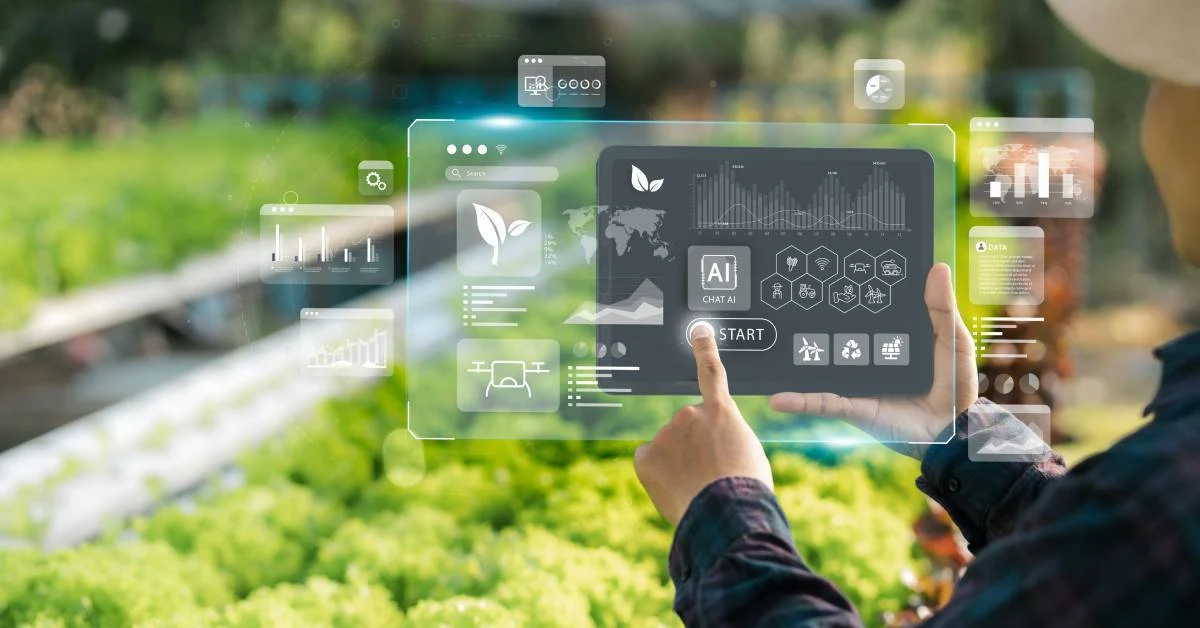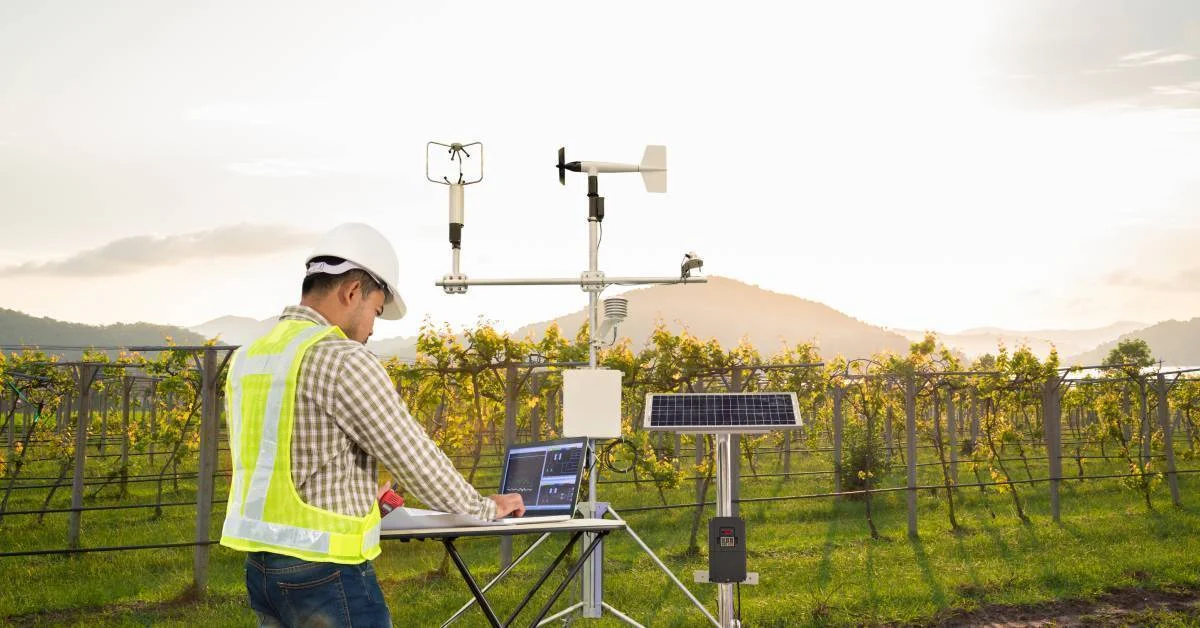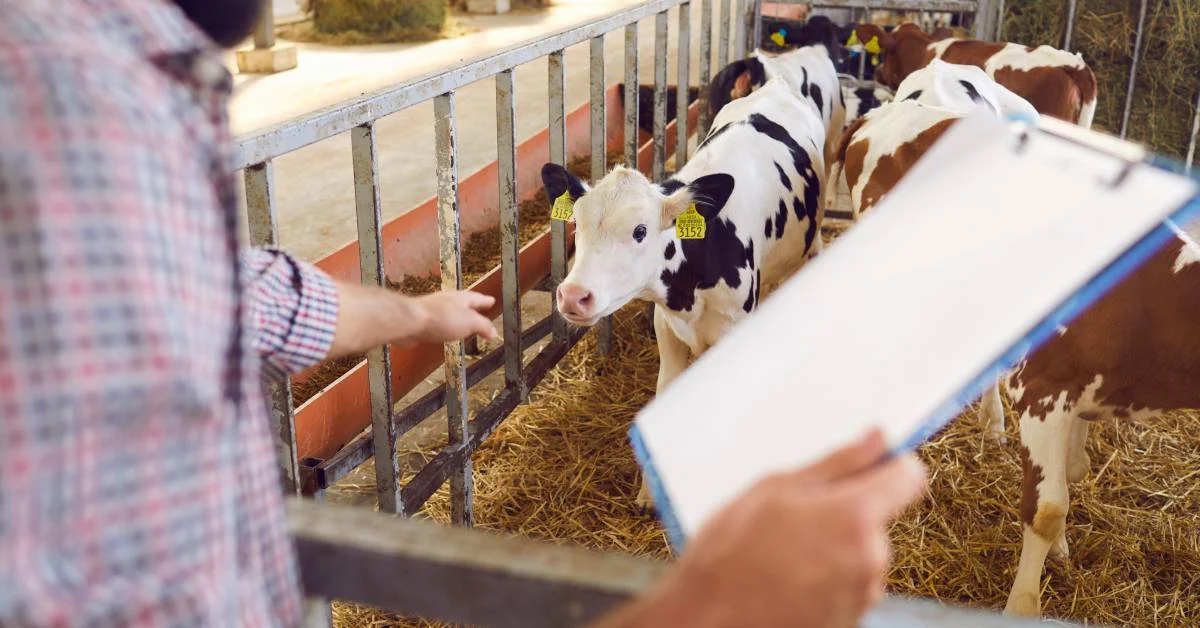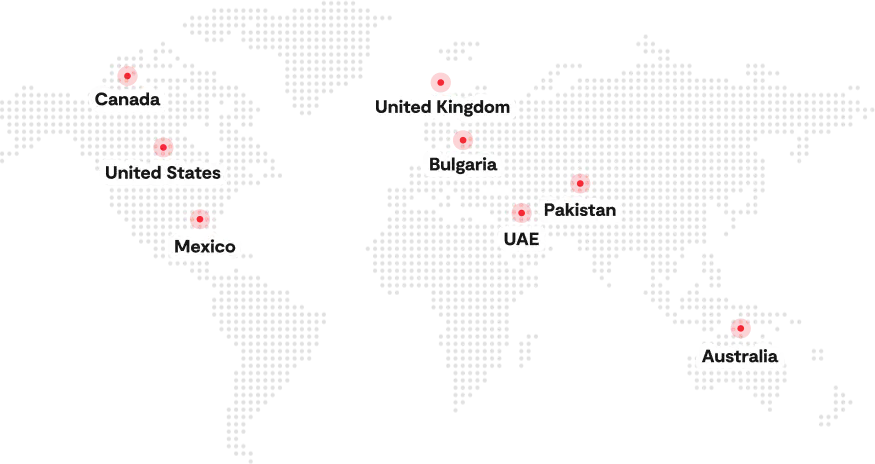Fresh produce supply chain runs on tight timelines, and the margin for error is shrinking. A missed harvest window, a delay in cooling, or a breakdown in transit can turn a profitable load into a write-off, sometimes within just a few hours.
Currently, labor shortages are causing delays in harvesting and packing. Cold chain capacity is stretched thin, and retailers are raising the bar on traceability, freshness, and shelf-life accuracy. But most produce businesses are still trying to manage fast-moving, high-risk inventory using generic food or CPG systems. These are the tools that simply weren’t built for the speed or complexity that fresh produce demands.
The impact is real. Globally, 28% to 55% of fruits and vegetables are lost after harvest, primarily due to preventable breakdowns in handling, temperature control, and distribution. That’s not just waste, it’s margin slipping through the cracks.
In this blog, we’ll discuss the most common supply chain challenges that produce businesses face and why solving them takes more than basic tracking tools. It takes a system built specifically for the way fresh produce actually moves.
Stages In Fresh Produce Supply Chain
While every fresh produce business operates slightly differently, the core agriculture supply chain stages remain consistent, and each one comes with its own set of operational risks. Here’s a closer look at how the stages of the fresh produce supply chain connect and where they often break down:
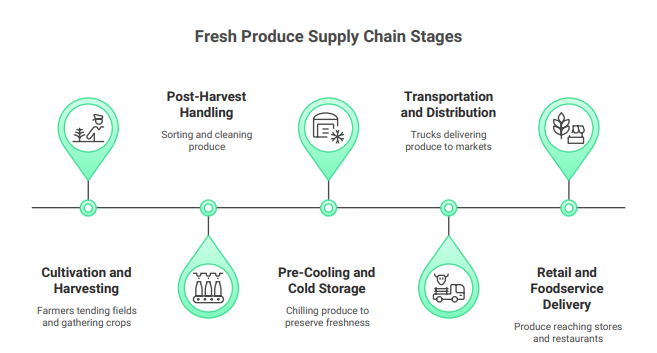
Cultivation and Harvesting
Cultivation and harvesting set the foundation for product quality, but consistency is rarely guaranteed. Variables such as microclimate shifts, uneven crop maturity, and field conditions can change rapidly, even within the same plot.
Producers who prioritize in-field monitoring and tighter coordination across blocks are better positioned to maintain grade standards with the help of modern tools like an harvest management software. Attention to detail at this stage, like crop density, harvest sequence, and variety-specific handling, can significantly reduce losses later in grading and cooling.
Post-Harvest Handling
The moment fresh produce leaves the field, the clock is ticking, and how it’s handled in those first few hours makes all the difference.
Things like inconsistent grading, excess moisture, or even rough handling during trimming can quietly reduce shelf life. Teams that dial in their post-harvest flow, wash timing, pack styles, temperature transitions, set themselves up for fewer rejections and better buyer satisfaction down the line.
Pre-Cooling and Cold Storage
Think of pre-cooling as the reset button for produce. Field heat doesn’t just affect shelf life; it accelerates spoilage, shrinks margins, and compromises transport quality if not addressed promptly.
Here’s what the best-run operations pay close attention to:
☑️Time to cool: Even short delays can trigger respiration and softening.
☑️Cooling method: Not all crops handle forced air or hydro cooling the same.
☑️Storage airflow: Uneven loading = uneven cooling = shorter shelf life.
Transportation and Distribution
Transport’s where things often go sideways, even after a smooth harvest and perfect cooling. One wrong route, a traffic delay, or poor stacking, and your shelf-ready product takes a hit before it even arrives.
Think of a multi-stop delivery where delicate berries are loaded beneath heavier cartons. By the time they reach the last stop? Crushed. That’s why smart routing, real-time visibility, and crop-aware handling rules are a must.
Retail and Foodservice Delivery
This final stage of the fresh produce supply chain is where expectations peak. Whether you’re delivering to a national retailer, a restaurant chain, or fulfilling eCommerce orders, buyers want the same things, like consistency, speed, and proof that your product will hold up on the shelf.
For fresh produce businesses, this means coordinating exact volumes, delivering on tight timelines, and meeting different specifications for every channel, all while maintaining freshness. A single slip here doesn’t just lead to waste; it puts buyer relationships and reorder opportunities at risk.
Key Challenges Disrupting Fresh Produce Supply Chain
Even with the best processes in place, the fresh produce supply chain is constantly under pressure. Here are some of the biggest disruptions growers, packers, and distributors are battling in 2025:
1. Perishability & Post-Harvest Waste
Perishability isn’t just about how fast produce spoils. It’s about how fast decisions are made once it’s harvested. One of the most significant leaks occurs in the hours immediately after harvest, when produce waits too long to enter cold storage or isn’t prioritized based on ripeness or customer specifications. That lag, often untracked, quietly eats into shelf life and increases post-harvest loss.
Another overlooked issue is data-poor rejection analysis. When buyers reject a shipment, many agribusinesses lack the tools to determine whether the issue originated in the field, during transit, or at pre-cooling. Without precise timestamps, temperature logs, or food traceability tags, each rejection becomes an unresolved cost rather than an insight.
2. Demand Volatility & Poor Forecasting
Forecasting demand for fresh produce isn’t just difficult, it’s inherently unstable. Promotions, weather shifts, and retailer behavior can swing volumes by 20–30% within days. Yet, many agribusinesses still rely on static, spreadsheet-based planning that can’t adjust in real-time. This results in overstocking perishables during a slump or missing margin during a demand spike.
What makes this worse is poor alignment between production and market signals. Often, what’s being planted or harvested doesn’t match updated buying patterns or sales data. Here’s what typically breaks down:
| Pain Point | Impact |
| Delayed buyer forecasts | Late production adjustments |
| No link between POS + harvest | Mismatch in grade/volume expectations |
| Reactive adjustments only | Shrinkage, urgent discounting, or rework |
Modern systems must sync harvest, packhouse, and market data in near real-time, because fresh demand doesn’t wait for your spreadsheet to catch up.
3. Fragmented Cold Chain & Logistics Coordination
One of the most painful realities in the fresh produce supply chain is that the cold chain isn’t really a chain. It’s a series of loosely connected handoffs. From field loaders to third-party carriers and cold storage operators, each player in the agricultural cold chain tracks their own slice of the journey, often with little visibility into what happened before or after. That fragmentation is where breakdowns and blame games start.
Take avocados, for example. If one pallet in a mixed load gets held at a cross-dock without proper airflow, internal temperatures spike, but there’s no shared alert, no unified sensor data, and no one accountable until the customer complains. By then, quality loss is irreversible.
The solution isn’t just tracking trucks; it’s coordinated, chain-wide cold data. Without it, logistics teams stay blind, and margin losses stay hidden.
4. Complex Compliance & Traceability Requirements
Maintaining compliance in the fresh produce supply chain isn’t just about food safety anymore; it’s about proving what happened, when, where, and with which lot, on demand. With the FSMA 204 rule now in effect, U.S.-bound suppliers must capture and transmit critical tracking events (CTEs) from harvest to retail. Many agribusinesses, much like those pursuing IT training, are finding that their legacy systems or manual logs simply can’t keep up with the demands of modern technology and fast-moving industries like fresh produce supply chains.
What complicates things further is that compliance isn’t standardized. One buyer might require QR codes tied to pesticide logs, another might need pallet-level temperature data, or farmworker traceability for labor audits. Without a centralized system that links traceability in fresh produce to operational events (like spraying, packing, and cooling), teams end up retrofitting reports under pressure, risking fines, rejections, or worse.
5. Climate Variability & Unpredictable Weather Events
Climate variability isn’t just disrupting growing seasons; it’s throwing off the entire planning and distribution rhythm for fresh produce businesses. Unseasonal rains, sudden frosts, or heat spikes don’t just affect crop yield; they affect harvest timing, labor availability, cold storage needs, and even buyer commitments downstream.
What makes this even harder is the lack of microclimate-level forecasting built into operational systems. Many agribusinesses rely on generalized weather data, which doesn’t capture hyper-local shifts that directly impact harvest windows or pest outbreaks. Here’s where it breaks down:
| Missed Input | Resulting Disruption |
| No microclimate alerts | Late or rushed harvest |
| Static harvest plans | Overlap with peak weather risk |
| No scenario modeling | Poor backup plans or allocations |
To manage a fresh produce supply chain well, producers need systems that don’t just monitor weather; they need ones that adapt logistics, labor, and quality plans in real time based on it.
Why Legacy Systems Fall Short in Fresh Produce Supply Chains
Many produce operations have adopted multiple agricultural technologies, inventory tracking, basic ERP modules, and standalone tools. But when what you use today worked well yesterday doesn’t meet today’s pace, that’s where gaps become visible. Existing systems may keep basic processes moving, but they weren’t architected for the speed, variability, and traceability in fresh produce.
Traditional technological solutions were designed for stable manufacturing or retail environments, not for fast-changing, field-driven supply chains. They often lack:
- Real-time cold‑chain monitoring or alerts
- Modular workflows matching fresh produce cycles
- Scenario-based forecasting tied to climate, promotions, or field variability
In practice, what this means on the ground:
- Blurry visibility across partners: A grower might have data in packing, but logistics and landing hubs remain invisible. Traditional supply chain ERPs can’t easily integrate GPS, IoT sensors, or partner dashboards.
- Slow response to exceptions: If harvest is delayed or a cold chain breach occurs, operators can’t reroute loads or reschedule packing dynamically. They’re stuck with post-facto root cause analysis.
- Limited trace-back: Regulatory requirements like FSMA Rule 204 demand tracking by lot, harvest block, and handler. Legacy systems often lack the granular chain-of-custody workflows for fast recall or compliance reporting.
While these systems may have once offered a reliable baseline, smart agribusiness leaders now view them as a hindrance to agility and profitability. In 2025, produce-specific ERP platforms are enabling end-to-end cold-chain visibility, yield-tied planning, and multi-channel fulfillment through a unified workflow.
⚠️ Key Areas Where Legacy Systems Can’t Keep Up
| Area | Why It Matters in Fresh Produce Supply Chains |
| Cold chain visibility | Lacks live temperature alerts, IoT integration, and shipment control |
| Demand-driven forecasting | Not adaptive to market shifts based on weather, retail trends, or promos |
| Traceability & recall readiness | Doesn’t track harvest blocks, lot IDs, or open handling events quickly |
| Modular workflows | Inflexible for varied crops, packing methods, or seasonal complexity |
| Cross-partner integration | Fails to unify data from transporters, packing houses, or retailers |
What a Purpose-Built ERP for Fresh Produce Looks Like
A purpose-built fresh produce ERP system isn’t just about digitizing workflows; it’s about aligning technology with the perishable, fast-moving, and high-risk nature of fresh produce supply chains. From managing ripeness stages to tracking pallet-level temperatures, fresh produce operations require more than what generic ERP systems can offer.
Instead of forcing you to retrofit processes, platforms like Folio3 AgTech’s Fresh Produce ERP are built specifically around the way produce businesses work. Here’s what that actually means in practice:
- Harvest-to-sale visibility: Track each lot from field picking to final delivery, linked with real-time fresh produce inventory management, grades, and quality data.
- Cold chain coordination: Monitor temperatures and handling events during storage and transit to prevent spoilage and improve delivery confidence.
- Built-in traceability & FSMA 204 compliance: Capture KDEs and CTEs without relying on external tracking sheets or post-process logging.
- Dynamic packhouse operations: Grade, sort, and label produce by buyer specs, with full integration to sales orders and dispatch.
- Multi-crop, multi-location logic: Manage varied crop cycles, SKUs, and storage conditions without creating spreadsheet chaos.
What makes solutions like Folio3 AgTech’s stand out is their flexibility. You’re not boxed into rigid workflows; you can scale across farms, facilities, and markets while keeping data centralized, accessible, and action-ready.
All in all, a real fresh produce ERP system isn’t just software, it’s the operational glue that connects your harvest, compliance, quality control, and customer delivery into a single system.
Conclusion
Navigating the fresh produce supply chain requires more than just operational effort. It demands systems that understand the pace, perishability, and precision this industry lives by. From unpredictable demand shifts to cold chain compliance and traceability in fresh produce, the challenges are too dynamic for traditional or generic ERP solutions to handle effectively.
What today’s agribusinesses need is not just more technology, but purpose-built solutions that reflect how fresh produce actually moves. Whether it’s real-time traceability, adaptive logistics, or harvest-linked planning, modern ERPs like Folio3 AgTech Fresh Produce ERP system are redefining what operational control should look like. The question isn’t if you need to modernize, it’s how long you can afford to wait.
FAQs
How Can Technology Improve The Fresh Produce Supply Chain?
Technology brings visibility where it’s most needed. From real-time field data to cold chain tracking and automated order flows, it connects the dots, reducing spoilage, improving planning, and making each handoff in the chain smarter and faster.
What Is Cold Chain Monitoring In Produce Logistics?
It’s about more than just temperature logs. Cold chain monitoring done through fresh produce post-harvest software utilizes live sensors and alerts to detect issues before quality declines, helping you maintain product integrity from harvest to store shelf.
How Does ERP Software Help Manage Fresh Produce Supply Chains?
A purpose-built fresh produce ERP system doesn’t just store data; it moves it across your operation. It tracks every pallet, automates compliance, integrates cold chain data, and provides a single version of the truth across growing, packing, and shipping.
Why Is Traceability Important In Fresh Produce Distribution?
When something goes wrong, traceability gives you speed and certainty. You can identify the source, act fast, and protect your brand while staying compliant and earning the trust of retailers and regulators alike.
What Are The Most Common Causes Of Spoilage In The Fresh Produce Supply Chain?
Spoilage often slips in through missed handoffs, delays at docks, trucks running warm, or a lack of handling visibility. It’s rarely one big error, but many small ones. And that’s exactly what smart systems are built to catch.

